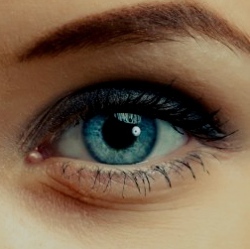
Columbia Engineering researchers have announced earlier this week that they have developed a simple way to reduce virtual reality motion sickness that can be applied to existing consumer VR devices, such as Oculus Rift, HTC Vive, Sony PlayStation VR, Gear VR, and Google Cardboard devices.
The trick is to subtly change the field of view (FOV), or how much of an image you can see, during visually perceived motion. In an experiment conducted by Computer Science Professor Steven K. Feiner and student Ajoy Fernandes, most of the participants were not even aware of the intervention.
What causes VR sickness is the clash between the visual motion cues that users see and the physical motion cues that they receive from their inner ears’ vestibular system, which provide our sense of motion, equilibrium, and spatial orientation. When the visual and vestibular cues conflict, users can feel quite uncomfortable, even nauseated.
Decreasing the field of view can decrease these symptoms, but can also decrease the user’s sense of presence (reality) in the virtual environment, making the experience less compelling. So the researchers worked on subtly decreasing FOV in situations when a larger FOV would be likely to cause VR sickness (when the mismatch between physical and virtual motion increases) and restoring the FOV when VR sickness is less likely to occur (when the mismatch decreases).
They developed software that functions as a pair of “dynamic FOV restrictors” that can partially obscure each eye’s view with a virtual soft-edged cutout. They then determined how much the user’s field of view should be reduced, and the speed with which it should be reduced and then restored, and tested the system in an experiment.
Most of the experiment participants who used the restrictors did not notice them, and all those who did notice them said they would prefer to have them in future VR experiences.
A different, more ambitious approach was announced in March by vMocion, LLC, an entertainment technology company, based on the Mayo Clinic‘s patented Galvanic Vestibular Stimulation (GVS) technology*, which electrically stimulates the vestibular system. vMocion’s new 3v Platform (virtual, vestibular and visual) was actually developed to add a “magical” sensation of motion in existing gaming, movies, amusement parks and other entertainment environments.
But it turns out GVS also works to reduce VR motion sickness. vMocion says it will license the 3v Platform to VR and other media and entertainment companies. The system’s software that can be integrated into existing operating systems, and added to existing devices such as head-mounted devices, along with smartphones, 3-D glasses and TVs, says Bradley Hillstrom Jr., CEO of vMocion.
“vMocion is are already in talks with companies in the gaming and entertainment industries,” Hillstrom told KurzweilAI, “and we hope to work with systems integrators and other strategic partners who can bring this technology directly to consumers very soon.” Hillstrom said the technology can be integrated into existing headsets and other devices.
Samsung has announced plans to sell a system using GVS, called Entrim 4D, although it’s not clear from the video (showing a Gear VR device) how it connects to the front and rear electrodes (apparently needed for pitch sensations).
